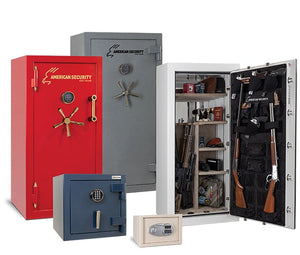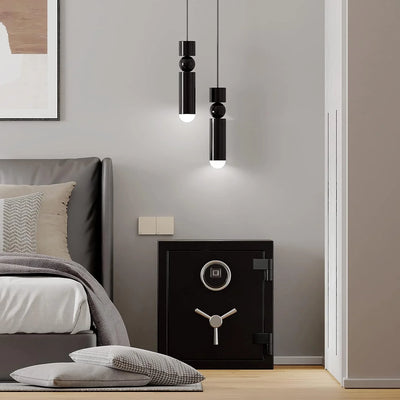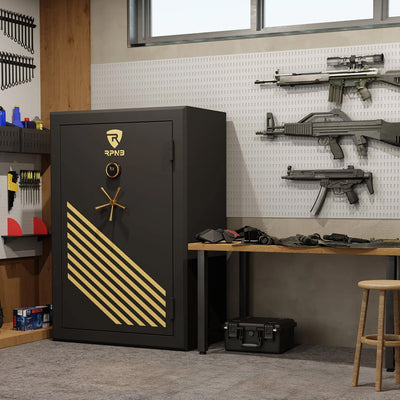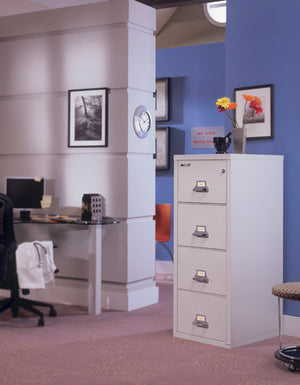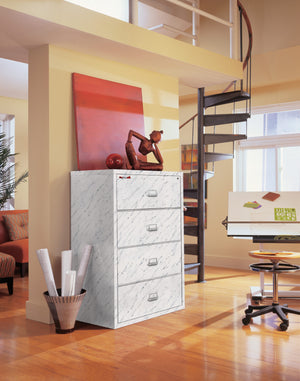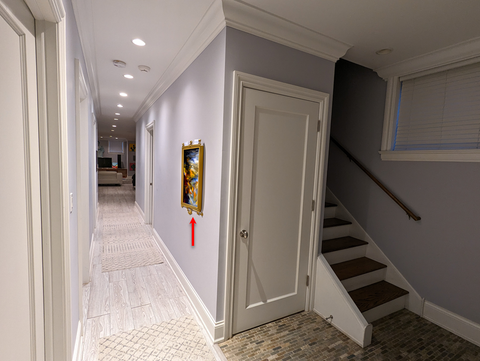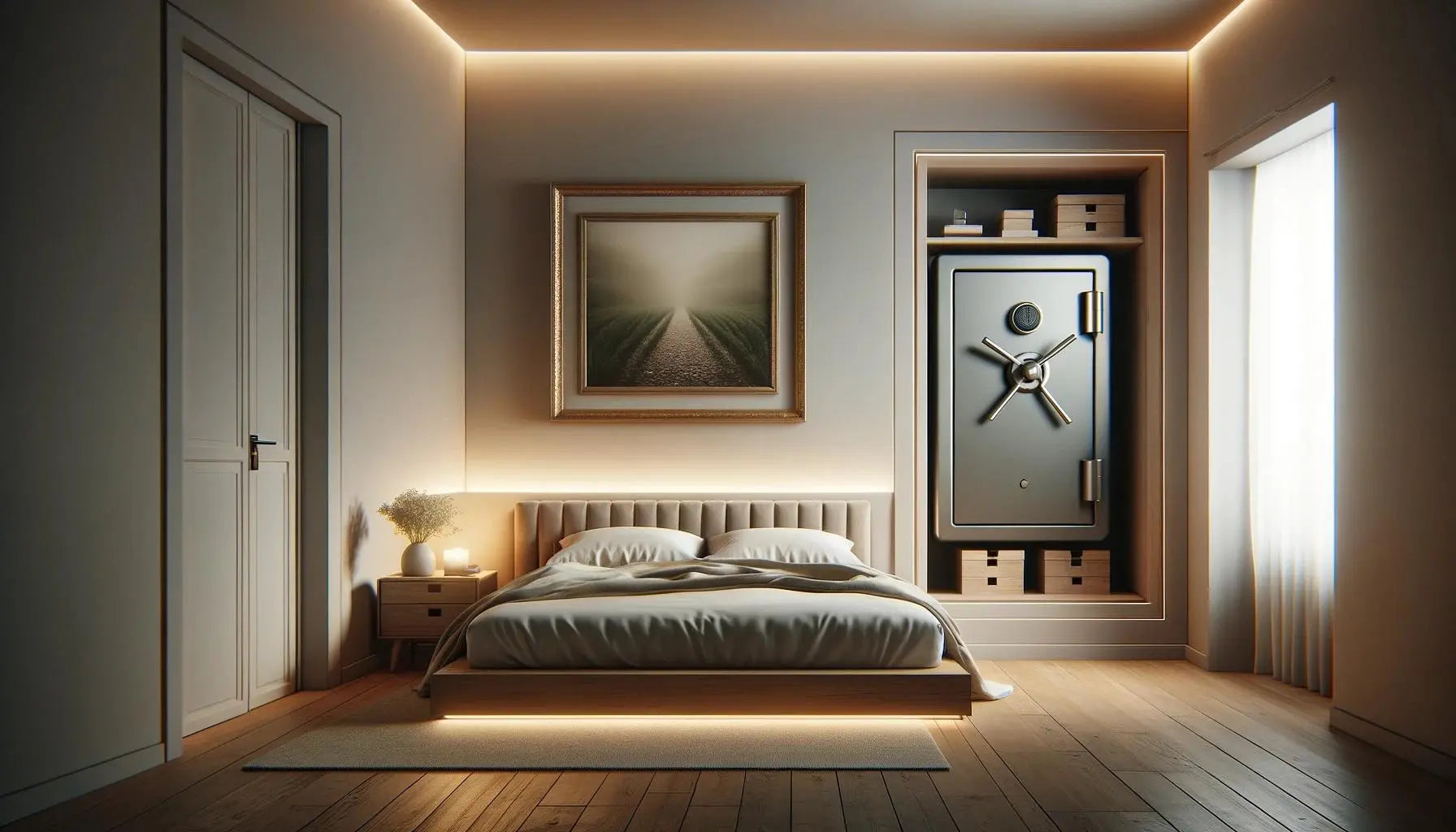
The Ultimate Guide to Wall Safes for Homeowners
Introduction:
Wall safes offer a secure and discreet way for homeowners to protect their valuables, documents, and firearms. Integrated seamlessly within walls, these safes provide not only security but also easy accessibility without sacrificing space. This guide explores what wall safes are, their benefits and limitations, the various types available, and essential installation tips.
What Are Wall Safes?
Wall safes are security devices recessed into wall spaces and secured to wall studs. They offer an effective solution for concealing valuables, often hidden behind artworks or mirrors for additional secrecy. Unlike traditional safes, wall safes are designed to blend into your home environment, providing a barrier against theft while being conveniently accessible.
Advantages and Disadvantages:
The primary advantages of wall safes include their concealment and space-saving design. They are less likely to be detected by burglars compared to freestanding safes and don't occupy floor space, making them ideal for smaller homes or apartments. Wall safes are also positioned at a comfortable height, allowing easy access to contents without the need to bend or crouch.
However, wall safes also have their limitations. They may offer limited space and are not typically designed to hold large items. Additionally, the construction of wall safes requires them to be lighter and potentially less secure against determined theft attempts compared to more robust floor safes.
Types of Wall Safes:
When considering wall safes for your home, it's essential to distinguish between theft-resistant and fire-resistant models, each designed for specific protection needs.
- Theft-Resistant Wall Safes: These safes focus solely on preventing unauthorized access to your valuables. They are known for their straightforward installation process, which can often be handled as a DIY project or with the help of a handyman. Theft-resistant wall safes come with various locking mechanisms, ranging from traditional dial systems and electronic keypads to advanced biometric fingerprint readers. Design-wise, modern theft-resistant safes may feature a flange around the front, minimizing the need for post-installation wall repairs and facilitating easier installation. The typical depth for these safes is around 4" to 6", with some models offering an expandable depth feature to adjust to your wall's specific dimensions.
- Fire-Resistant Wall Safes: In contrast to their theft-resistant counterparts, fire-resistant wall safes require more meticulous planning for installation due to their typically deeper construction. These safes often project into an adjacent wall, necessitating placement in areas like a wall facing a closet or the unused space beneath a staircase. One critical aspect of fire-resistant safe installation is that drilling holes through the sides of the safe is not viable, preserving the integrity of the fireproofing material. Installers usually construct a wooden brace beneath the safe to support its weight and provide a secure anchoring point.
- Dimension Considerations: The dimensions of wall safes can vary significantly to accommodate different storage needs. While heights can range widely, with some models large enough to store rifles, widths usually fall between 14" and 14-1/4", designed to fit the standard distance between wall studs, which is 16" on-center. The depths of wall safes are commonly designed to be 4" or 6", accommodating the standard wall depths found in most residential homes. Some wall safes have an adjustable depth feature, which allows you to adjust the depth of the safe to fit your wall. This ensures a seamless fit within the structural confines, making installation straightforward while maximizing the use of space.
- Type of Lock: The type of lock you choose for your wall safe is a crucial decision that hinges on your personal preferences and security needs. The market offers a variety of lock types, each with its own set of benefits and potential drawbacks.
- Mechanical Combination Locks are revered for their reliability and longevity, employing a traditional dial mechanism to input codes. While they boast a low failure rate, they might present a steeper learning curve for those not accustomed to their operation.
- Electronic Combination Locks stand out for their convenience and high-security features, utilizing a keypad for code entry. These locks depend on batteries and are celebrated for their straightforward usability and adaptability across different security needs.
- Key Locks, traditionally favored for their simplicity, are witnessing a decline in popularity in the USA, except in the most basic wall safes. This shift comes as electronic and biometric locks gain traction, thanks to their enhanced reliability and decreasing costs. The advancements in technology and affordability of these more secure locking mechanisms are making them the preferred choice for safeguarding valuables.
- Biometric Locks represent the cutting edge of safe security technology, offering access through fingerprint recognition or other biometric data. Known for their ease of use and robust security, biometric locks provide quick and user-friendly access without compromising on safety.
While each lock type offers distinct advantages, as a general guideline, keypads and biometric locks are often preferred for their ease of use and dependable security. These options streamline the access process while ensuring your valuables remain well-protected. Ultimately, the best lock for your safe will align with your specific security requirements, lifestyle, and personal preference, ensuring both peace of mind and convenience.
Choosing the right wall safe involves considering what you intend to secure, the level of protection you need, and the specifics of your home's structure. Whether safeguarding documents, jewelry, or firearms, there's a wall safe designed to meet your security requirements while blending seamlessly into your living space.
Installation Locations:
The best locations for wall safes are typically behind doors, pictures, mirrors, or within closets—places that are not immediately visible to an intruder. Consider areas of the home that are less trafficked and have structural support to accommodate the safe.
For safes designed to resist fire, the rear part of the unit often extends into the space behind it. Consequently, optimal placement involves areas where this protrusion remains inconspicuous and does not disrupt daily activities, such as walls adjoining closets or beneath staircases, effectively utilizing spaces that are otherwise underutilized.
The image below shows an example of a fire-resistant wall safe that has been installed beneath a stairway. The depth of the safe is greater than the wall's thickness, so it protrudes into the unused area under the stairs. This installation spot is advantageous because the space under the stairway is out of sight and away from high-traffic areas, reducing the chance that the safe's presence will alter the room's appearance or be easily noticed. Thus, it not only keeps the safe discreet but also lowers the likelihood of it being found.
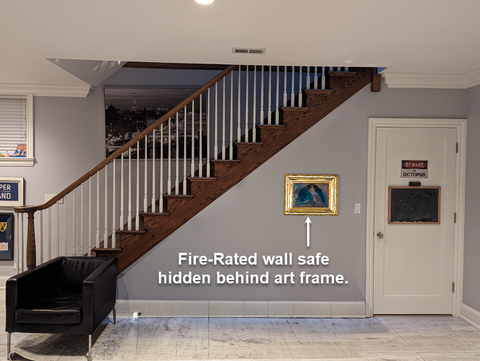
The image below shows an additional instance of a fire-resistant wall safe that has been installed in a spot that conceals the safe's rear projection and situates it away from frequently trafficked areas.
Basic Installation Steps:
- Locate the studs in the wall using a stud finder.
- Draw the outline of the safe on the wall between the studs.
- Cut out the opening using a drywall saw.
- Position the safe into the opening and press it flush against the wall.
- Fasten the safe to the studs with screws provided.
Detailed Installation Videos:
Here are a couple of detailed videos demonstrating the installation process for typical 4" or 6" deep wall safes, offering a visual guide to help you through the setup:
Wall Safe Installed In A Closet:
Wall Safe Installed Behind An Office Door:
Conclusion:
Wall safes provide an excellent security solution for homeowners looking to safeguard their valuables discretely. By understanding the types available and weighing their pros and cons, you can enhance the security of your home effectively. Whether for storing jewelry, important documents, or firearms, a well-chosen wall safe is a valuable addition to any home security strategy.


